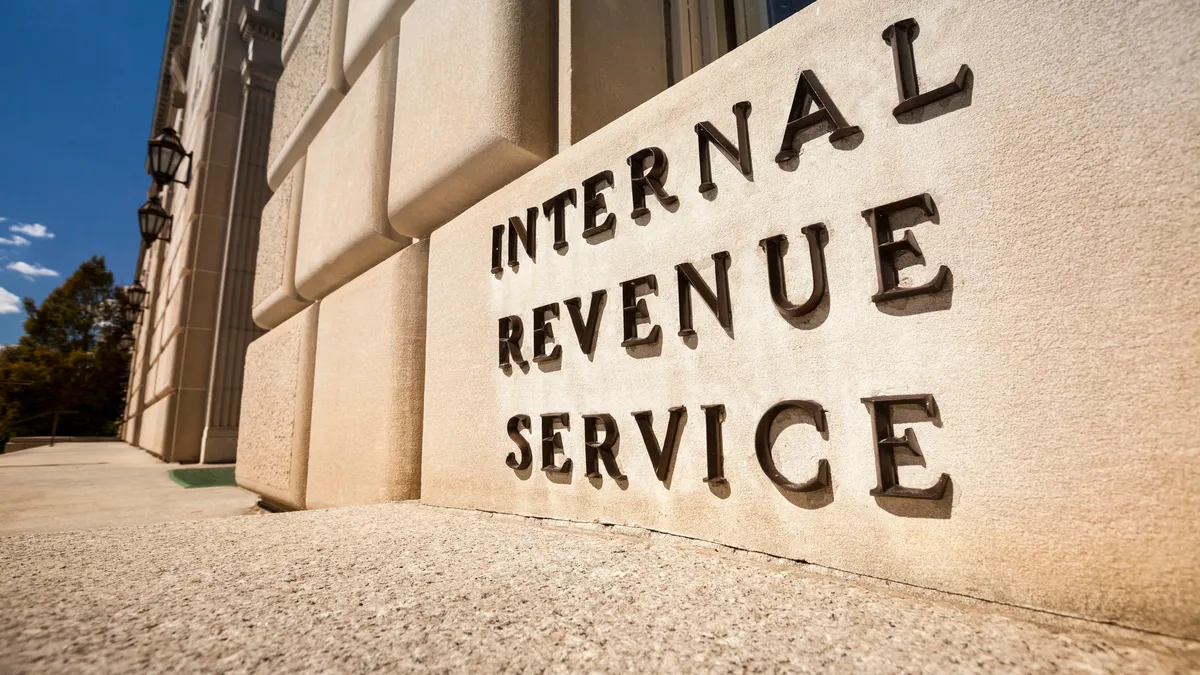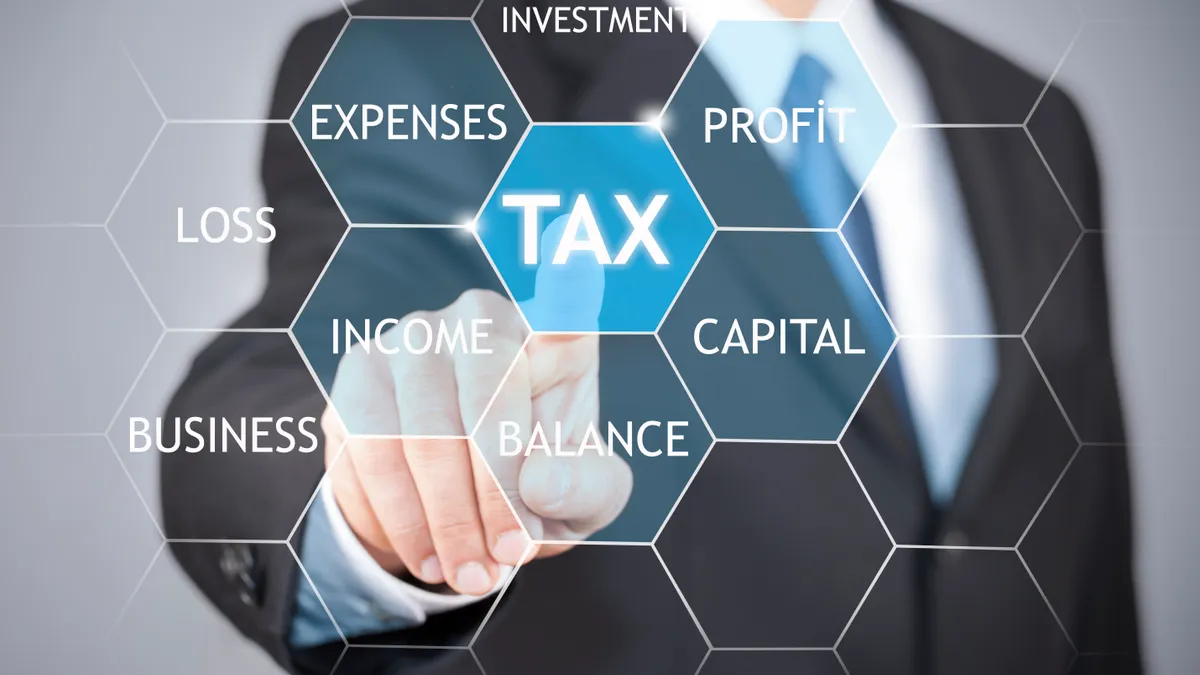Since Americans voted to return former president Donald Trump to the White House, business executives have been scrambling to pinpoint exactly what tax scenarios to plan for under his incoming new administration.
Questions are swirling around just about every tax issue, as executives wade through the myriad tax changes the President-elect proposed on the campaign trail, as well as the potential shifts to existing tax law that could be revamped, according to Big Four tax experts from Deloitte & Touche and Ernst & Young who spoke during separate press briefings held this week. Trump’s take on individual taxes drew headlines throughout his campaign, including his proposals to exempt from taxation over-time pay, tip income and social security benefits, and to create a tax credit for family care givers.
Then too Trump also garnered businesses’ close attention with his proposal to impose a baseline 10%-20% tariff on all U.S. imports, as well as a 60% tariff on those from China and floated lowering the corporate income tax rate to 20% from 21% or to 15% for companies that make their products in the U.S, according to the Tax Foundation. Meanwhile businesses are also wrestling with how and whether Trump will protect trillions of dollars’ worth of expiring tax cut provisions in his 2017 Tax Cuts and Jobs Act that will sunset at the end of 2025.
A potentially fast pace: “You have to keep up with it”
That all adds up to a “huge agenda” on the tax policy front for lawmakers, given that they’ll be considering new tax cuts on top of the estimated $4.6 trillion cost of extending Trump’s TCJA tax cuts, Anna Taylor, deputy leader of Deloitte & Touche’s tax policy group said in the company’s briefing arlier this week. Businesses also are trying to figure out how quickly any changes to tax law will play out.
Ernst & Young’s Americas Deputy Vice Chair-Tax Martin Fiore said his firm has been grappling with how to advise their clients’ finance teams to prepare for the TCJA extensions and other evolving tax policy matters, noting that this time around Trump’s knowledge and experience with legislation could accelerate the process. In preparation for that, he warns that organizations need to make sure they understand any proposed legislation, model the various potential impacts the changes could have for their own businesses, and then report those out to stakeholders.
“We just see this as something that’s very fast-moving,” Fiore said during the briefing earlier this week. “It’s like telling a story and you have to keep up with it.”
Early termination, modifications of IRA?
Of course, it’s too early to know exactly what tax policies the Trump administration will zero in on. But some of the tax experts who spoke this week said they expect Trump and Republican lawmakers to at the very least leverage their newfound trifecta power to chip away at some elements of the 2022 Inflation Reduction Act that was a signature legislative achievement for President Joe Biden.
“In general legislation passed on a partisan basis is almost certainly on the chopping block for repeal in some way shape or form,” EY Global Tax Policy Leader Aruna Kalyanam said in the briefing, noting that surgical modifications are more likely than a full repeal because many of the projects benefit Republican states and because a full repeal would disrupt energy markets. “It’s generally unlikely that Congress will do anything in the sense of a retroactive repeal because it really does wreak a sort of chaos on the market,” Kalyanam said.
The massive IRA channeled billions of dollars into clean energy projects, such as a $200 million expansion of wind tower manufacturer CS Wind’s facility in Pueblo, Colorado and tax credits for electric vehicles aimed at combatting climate change. The act also allocated an extra $80 billion to the Internal Revenue Service through 2032, and established the 15% corporate alternative minimum tax.
Rather than a repeal that would inject a lot of “tumult” into the energy industry, Kalyanam said lawmakers could do what she called an “early termination,” which would entail chopping off the last few years of the tax credits and generate significant revenue savings. At the same time, she said certain types of programs in the IRA enjoy universal support, such as those tied to carbon capture and sequestration and clean hydrogen.
Optimism and caution around corporate income tax
In a talk at the Economic Club of New York back in September, Trump pledged to cut the corporate tax rate to 15% from 21% for companies that make their goods in the U.S., reviving a perk that gave a lower rate to domestic manufacturers that the former president’s TCJA eliminated, The Wall Street Journal reported.
The so-called “made in America” 15% rate has drawn a cautiously optimistic response from businesses, though companies are eager for more details about it, Colleen O’Neill, EY US National Tax Department Leader said in the briefing. At the same time, it has spawned a whole host of questions, about what it will take to qualify and whether it will be structured something like the Sec. 199 DPAD or the Domestic Production Activities Deduction. “That statutory language already exists,” O’Neill said. “When you’re thinking about expediency, leveraging off existing statutory language is really helpful.”
Where companies are more cautious is on the foreign side of corporate income tax, she said. There are questions around what the Republican party thinks about taxes on international and off shore income, she said. For example, O’Neill said it’s unclear whether businesses would get the promised extensions of the TCJA provisions around foreign income or will they see new forms of existing provisions such as Subpart F of the Internal Revenue Code.
The proposed tariffs are also creating a lot of anxiety in the business community, she said. Again, as with the corporate income taxes, businesses are puzzling over what the structure of such tariffs will mean for them and whether, if their supply chain is hit by them, they should consider moving their manufacturing location. One of the concerns is also how fast they could be put into place.
“How quickly could we see this and could this be a Jan. 21 event where taxes are imposed based on a unilateral action of the administration?” O’Neill said. “There’s lots of questions, I’d say and lots of anxiety about the potential for tariffs.”
Timing and TCJA’s 2025 cliff
Left unchanged, the expiration of temporary tax cuts that were contained in the TCJA at the end of next year would mean a collective $4 trillion plus tax increase for businesses and individuals. Even before it was clear who would be president, a July report from the Big Four consulting and accounting firm KPMG asserted that the TCJA conundrum could make 2025 “the most important year for tax legislation since 2017,” when Trump signed the tax law that was a signature legislative achievement for him.
Among the closely-watched expiring corporate tax provisions are the global intangible low-taxed income (GILTI) deduction, under which domestic corporations have an effective tax rate of 10.5% that would go up to 12% by the end of next year if not extended, according to the KPMG report.The base erosion and anti-abuse tax or BEAT tax aimed at curing foreign and domestic corporations from shifting profits out of the U.S. would see the 10% minimum tax increase to 12.5% for certain taxpayers from if not extended. .
The fate of the TJCA extensions is entwined with the budget and debt ceiling negotiations, Jonathan Traub, Washington National Tax and Leader - Tax Policy Group at Deloitte.
“You can’t separate that discussion on what to do with TCJA given the very large either tax increases if they do nothing or addition to the deficit and debt if they don’t fully offset it,” Traub said. “So those two things running alongside have motivated Republicans to try to move on reconciliation at the beginning of the year immediately after Jan. 20 [inauguration] or even before that setting the table for what they’re going to do.”
Editor’s note: This story has been updated to correct the name of the existing tax deduction which has language that could potentially be used for future tax changes.





















